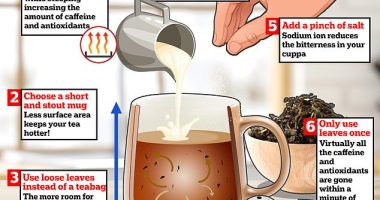
These microplastics aren’t just washing ashore and accumulating on beaches. When waves crash and winds scour the ocean, they launch seawater droplets into the air. These obviously contain salt, but also organic matter and microplastics. “Then the water evaporates, and you’re left just with the aerosols,” or tiny floating bits of particulate matter, says Cornell University researcher Natalie Mahowald, who co-led the work with Brahney. “Classically, we atmospheric scientists have always known that there are sea salts coming in this way,” she continues. But last year, another group of researchers demonstrated this phenomenon with microplastics, showing that they turn up in sea breezes.
This time, Mahowald and Brahney thought bigger, using atmospheric models to show how far marine microplastics might travel after they take to the air. They also looked at other sources of microplastic emissions, like roads, cities, and agricultural fields. They knew, for instance, how much dust is generated from fields and how much microplastic might be in that dust.
The researchers then combined this atmospheric modeling with real-world data. Brahney used air samplers scattered in remote locations throughout the American West, so at a given time she could say how many plastic particles had fallen out of the sky. Mahowald’s modeling could also say what the atmospheric and climate conditions were like at that time, allowing the researchers to trace where the particles had likely blown in from.
They found that agricultural dust only provided 5 percent of atmospheric microplastics in the West. And surprisingly, cities supplied only 0.4 percent. “If you were to ask anyone how plastics are getting into the atmosphere, they would say from urban centers,” says Brahney. “I like to think of it more as the roads that are leaving the cities that are the most important.”
When a car rolls down a road, tiny flecks fly off its tires as part of normal wear and tear. This material isn’t pure rubber; it contains added synthetic rubbers and a slew of other chemicals. Tire particles, then, are technically microplastics, and they’re all over the place. One study in 2019 calculated that 7 trillion microplastics wash into San Francisco Bay each year, most of it from tires.
Cities actually do produce an astonishing amount of microplastic through road traffic and from litter breaking apart, but it doesn’t seem to get high into the atmosphere. That’s for two reasons, Brahney and Mahowald think: Buildings block the wind from scrubbing the surfaces of a city and propelling those bits away, and people drive cars slower in metro areas, so there’s less agitation of tire particles that end up on the roadway. But get out onto the interstate highways and there’s a lot more open space where winds can whip up debris. Plus, says Mahowald, “cars are moving at 60 miles an hour. That’s a lot of energy. And little tiny particles can get in the atmosphere with that energy.”








